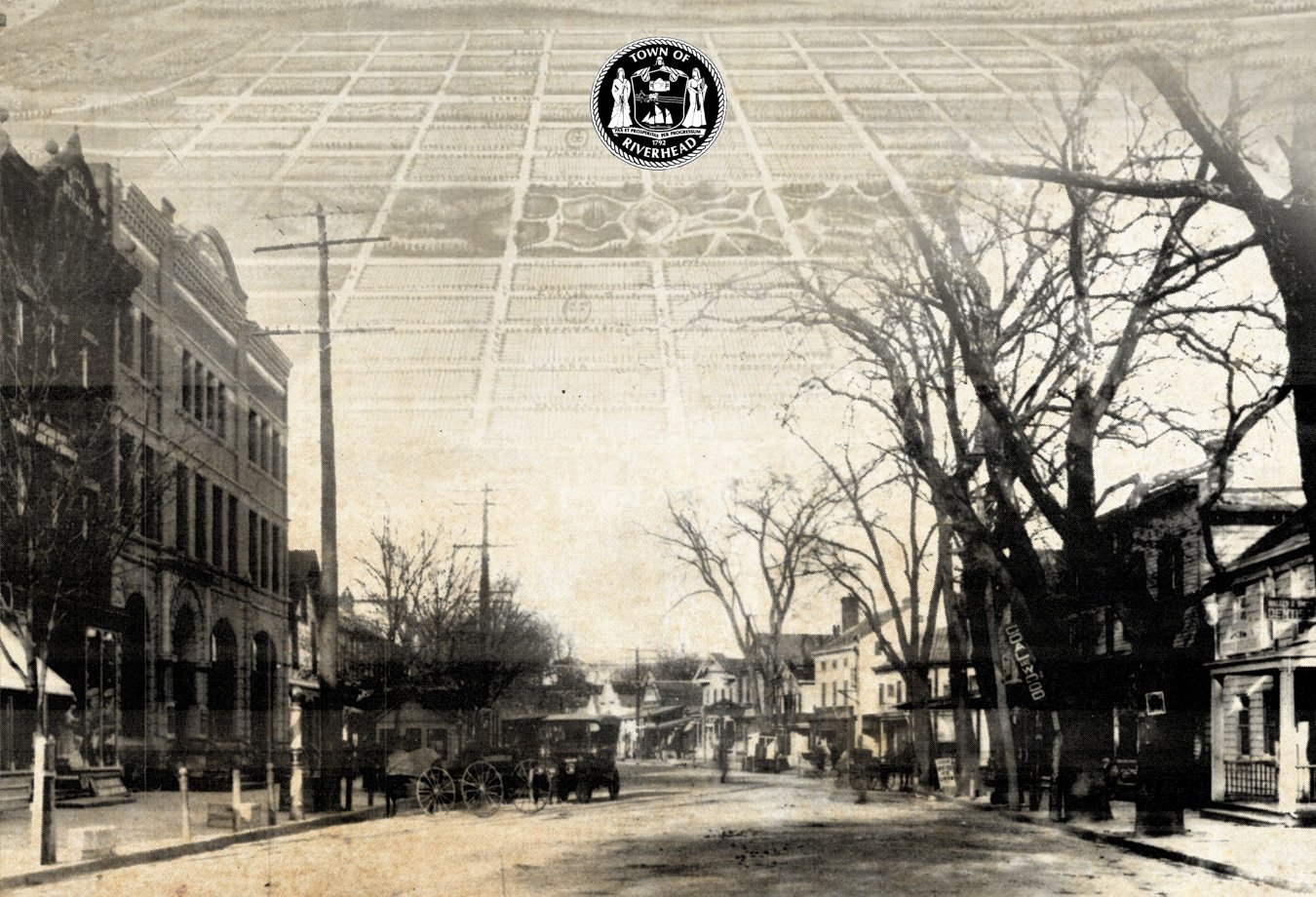
SCROLL BELOW FOR A MAP OF ALL THE STOPS ON THE TOUR.
SCROLL BELOW FOR TEXT OF THIS STOP
-
Narrator: Mabel Griffing (1879-1961), 13 years old when her father built the water tower, youngest of 3 sisters for whom Grangebel park was named, voiced by Jenifer Maxson
Hello. Welcome to Grangebel Park. I’m Mabel Griffing, the “Bel” in the name Grangebel -- but that’s a story for later. You can definitely say that we Griffings have deep roots here in Riverhead. One of my ancestors, John Griffing, was the first settler in what is now downtown back in the early seventeen-hundreds. Griffing Avenue was laid out through the middle of the old family farm. My father was Judge Timothy M. Griffing.
My father graduated from Yale and became a lawyer. William McKinley was one of his law school classmates. He went on to have the largest and most profitable legal practice in Suffolk County. He even argued a few cases before the Supreme Court and counted former president William Howard Taft as a good friend. On top of all that, he was a trustee of the Riverhead Savings Bank, president of the Suffolk County National Bank and an organizer of Riverhead’s first electric company. When he died in 1924, his obituary spread over three pages in the County Review and they called him the “foremost citizen of the county.”
We had a beautiful house a little west of here fronting on the Peconic River.
Where we are standing now had been the site of a water-powered flour mill. The mill burned down in the year I was born 1879 and the property become an overgrown and unsightly swamp. So my father purchased the property, which lay immediately east of his family homestead, in 1884.
Over the next decade, he improved the site and turned it into a beautiful park, that he opened to the public. He named the park “Grangebel” after us three daughters: Grace, Angeline and Mabel. “G-r-a” from Grace, “a-n-g-e” from Angeline and of course the “b-e-l” from me, Mabel. You get it?
In 1892, father built a 100-foot-tall tower on this spot, right over the old mill dam. It housed a large water tank, a grist mill and two turbine-type water wheels — one to power the mill and the other to operate pumps to lift water from two 85-foot-deep wells to the water tank.
When it was finished in September 1892, the tower was the tallest structure in the county. Father had the sheathing painted to resemble a stone-walled French castle. It was beautiful.
Father exhibited a photo of the water tower at the 1892-93 Paris International Exposition and won a bronze medal “for its picturesqueness and artistic quality.” The tower had a 25-foot observatory atop its roof that became a popular place for viewing downtown Riverhead and for taking photographs.
After construction of the tin-man tower on Pulaski Street, the once-beautiful Grangebel tower fell into disrepair and was taken down in 1948 and sold to the highest bidder as scrap lumber.
The small brick Pump House and a stone foundation is all that is left of the scenic water tower that once graced Grangebel Park and was featured on so many early-20th-century postcards from the town of Riverhead.
But, I am pleased to say that Grangebel Park has been restored to some of its former beauty. Why don’t you take a walk around while you are here?
[Some material from Riverhead: The Halcyon Years, 1861-1919 by Thomas M. Stark (Maple Hill Press, 2005); and Riverhead Local, Denise Civiletti, Nov 27, 2010]









